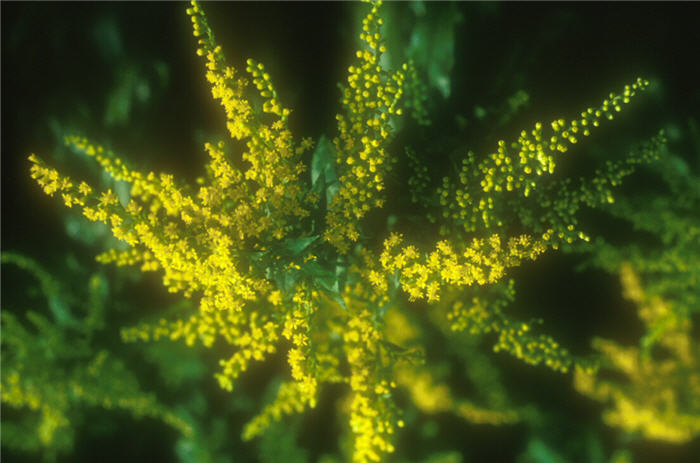| Botanical Name: Solidago caesia | |
| Common Name: Blue-stemmed Goldenrod |

-
Anatomy
-
Culture
-
Design
Plant Type
Perennial
Height Range
1-3'
Flower Color
Yellow
Flower Season
Summer, Fall
Leaf Color
Green
Bark Color
n/a
Fruit Color
n/a
Fruit Season
n/a
Sun
Full, Half
Water
Low, Medium
Growth Rate
Fast, Moderate
Soil Type
Sandy, Clay, Loam
Soil Condition
Average, Rich, Well-drained, Dry
Soil pH
Neutral
Adverse Factors
n/a
Design Styles
English Cottage, Formal, Japanese, Meadow, Ranch
Accenting Features
Showy Flowers
Seasonal Interest
Summer, Fall
Location Uses
Background, Shrub Border, Walls / Fences
Special Uses
Cut Flowers, Erosion Control, Mass Planting, Naturalizing
Attracts Wildlife
Butterflies
Information by: Stephanie Duer
Photographer: Bobbie Schwartz
Photographer: Bobbie Schwartz
-
Description
-
Notes
Blue-stemmed goldenrod is a mid-west native found in woodland areas. It grows about 30 to 36 inches tall on arching, wiry, greenish-purple stems which are covered with a silvery-white waxy bloom that can be rubbed off. Tiny, bright yellow, daisy-like flowers appear in a series of loose clusters in the leaf axils along the length of the stems, with the terminal clusters being the largest. Blooms in late summer to fall, making them a wonderful companion to ornamental grasses. Lance-shaped, medium green leaves are toothed, tapered and sharply pointed. Attractive to bees and butterflies.
Grow in average, dry to medium, well-drained soils in full sun to part shade. A woodland species that tolerates poor, dry soils and light shade, but performs best in full sun. Will grow in clay soils. This species is primarily clump-forming and does not spread aggressively as do some of the other goldenrod species and hybrids. Goldenrods have been wrongfully accused of causing hay fever which is actually an allergic reaction to wind-borne pollen from other plants such as ragweed.